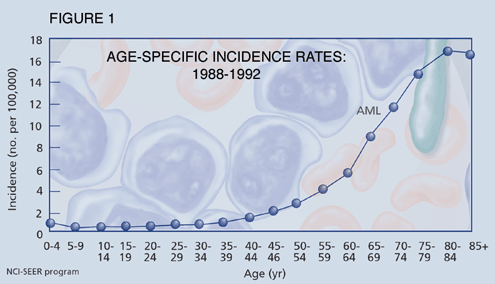M.D. Minden, M.D., Ph.D., FRCPC
Princess Margaret Hospital
University Health Network
Toronto, ON
Introduction
Leukemias are malignancies of the blood and bone marrow and are classified as either acute or chronic malignancies of the myeloid--red blood cell, granulocyte, platelet lineage--or lymphoid--T or B lymphocyte. In this article we will focus on acute myeloblastic leukemias (AML) and recent advances in their classification and therapy.
In the United States, approximately 10,100 cases of AML are diagnosed each year and the yearly mortality rate from this disease is approximately 6,900 individuals. The incidence of AML is low in children (<1/100,000) and increases with age, such that by the time a person reaches the age of 80 the incidence is approximately 15/100,000 (Figure 1).1 Over 60% of patients are 55 years of age or older, making this a significant problem in the aging population.

AML develops as the result of genetic changes in hematopoietic stem cells of the bone marrow.2 These changes block the ability of the cell to undergo normal differentiation resulting in a blast-like morphology. In some cases, the patient may have large numbers of circulating leukemic blast cells compromising blood flow to vital organs.

